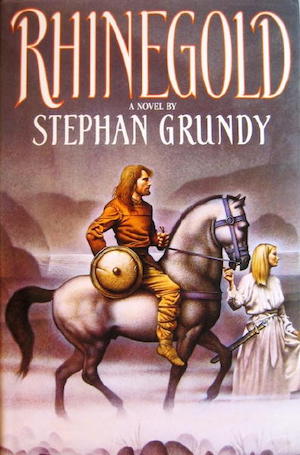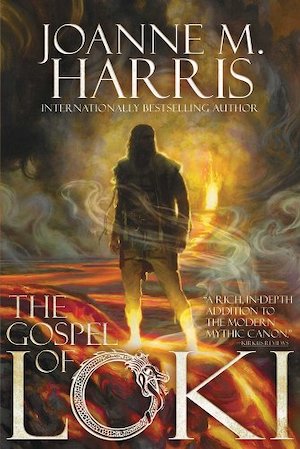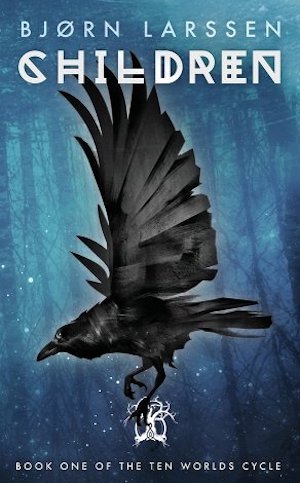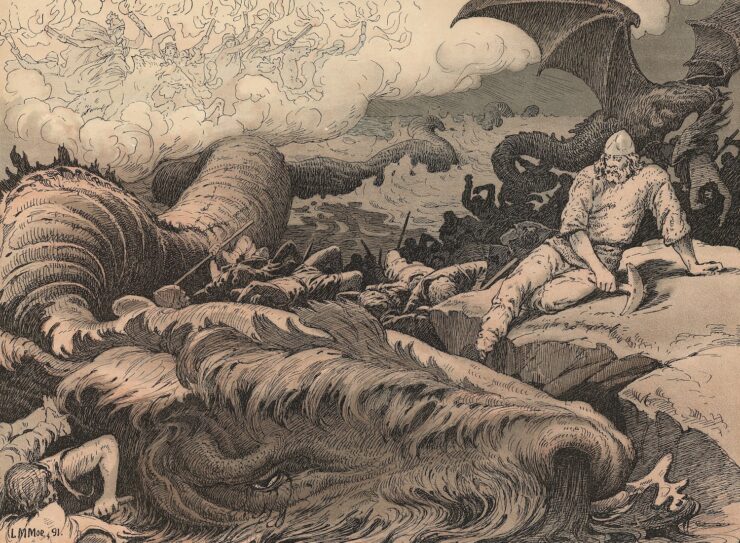Interest in all things Viking-related has really boomed over the past decade. This is probably due, at least in part, to the popularity of the History Channel’s Vikings television series, which in turn rode the coattails of Game of Thrones’ success. But the whole theme has been steadily building momentum for much longer. In the early 2000s, The Lord of the Rings films brought Norse imagery to an unprecedented number of moviegoers, while around the same time, Bernard Cornwell penned the first volume of his Saxon Tales, which was eventually adapted for television and lent the entire series its name: The Last Kingdom. And that’s to say nothing of the 20th century’s offerings—though, aside from Tolkien, those tended to be more peripheral than the releases that we’re seeing more recently.
The latest strands are now quite multitudinous and range from the critically acclaimed historic fiction of Linnea Hartsuyker and the best-selling fantasy novels of John Gwynne to the big-budget motion picture The Northman, to the crude and quirky Netflix humor series Norsemen, to the influential musical albums of Amon Amarth and Wardruna.
While all of these examples involve some degree of inspiration from (and often feature direct allusions to) the Norse myths, actual retellings of the mythology itself tend to pop up less frequently. In the world of books, two prominent retellings have been released in the past ten years: Neil Gaiman’s Norse Mythology, which is a very straightforward recap of the standard mythological arc, and Genevieve Gornichec’s The Witch’s Heart, which relates the same general arc but from the unique perspective of a female protagonist—a minor character in the original stories who becomes the heroine of her own tale in this version. Both of these books provide a solid entry point to the world of the Norse myths—particularly the stories contained in the Icelandic Eddas, which remain our foremost medieval sources on the subject. If you enjoyed either Gaiman’s book or Gornichec’s book or both, and are interested in going deeper into that mythological world, then the following five novels are very much worth your attention.
War of the Gods by Poul Anderson

Poul Anderson was an author best known for his science fiction as well as for his role as a founding member of the Society for Creative Anachronism, but he also wrote a number of fantasy novels directly inspired by Norse history and mythology. War of the Gods is the most blatantly mythological of these—it is essentially a novelization of the life of the legendary Danish hero, Hadding, who predates the more famous Hrolf Kraki by several generations and appears early in Saxo Grammaticus’ Gesta Danorum (one of the few major non-Icelandic medieval sources of Norse mythology and ancient folklore).
Set against the backdrop of the mythical Aesir-Vanir war, War of the Gods fleshes out Saxo’s violent, action-packed story of Hadding from his early youth being raised by giants, through his encounters with Odin and years of warfare and adventure, to his eventual and highly ritualistic death. Anderson relied heavily on the research of French philology and religion scholar Georges Dumézil in his construction of the book, and consequently, Njord, the god of the sea, plays a very big role in it. War of the Gods is incredibly entertaining and offers a great gateway to the mythological tales that exist outside of the Icelandic Eddas.
Rhinegold by Stephan Grundy

Rhinegold is a retelling of the Old Norse Saga of the Völsungs by Stephan Grundy, a scholar of Germanic paganism and leading figure within the Asatru faith during his lifetime. Incorporating additional details from the German Nibelungenlied and Thidrek’s Saga and taking the form of an epic, heroic fantasy novel, Rhinegold is a multi-generational saga that focuses on Sigurd the Dragonslayer, who also appears in the Icelandic Eddas (although outside the main narrative arc of both). This is the ancient story that inspired Wagner’s Ring Cycle and many elements of the work of Tolkien. Partial retellings of the story have been tackled previously (as evidenced by Diana L. Paxson’s Wodan’s Children trilogy) and since (as evidenced by Kate Heartfield’s forthcoming The Valkyrie).
Grundy’s version, which is sadly now out of print, is unique in following the entire narrative arc of The Saga of the Völsungs—not just the ill-fated Sigurd/Brynhild/Gudrun love triangle. The setting is Western Europe during the Migration Period, when the Germanic tribes were on the move, Rome was sliding toward ruin, and Attila the Hun lurked as an ever-present threat in in the east. Taking on his alternative name of Wodan, Odin appears on a recurring basis throughout Rhinegold, just as he does in the original sources, to pull the strings of the mortal heroes and heroines. Featuring swan maidens, a gold-hoarding dragon, magical swords, valkyries, sinister dwarves, werewolves, twisted acts of revenge, ill-fated love—Rhinegold provides a rousing rendition of one of the original blueprints for all of these now-classic fantasy genre tropes.
The Gospel of Loki by Joanne M. Harris

The lightest and probably best known book on this list, The Gospel of Loki is a novelization of the standard mythological arc—so, in that sense, similar to Gaiman and Gornichec’s novels—but, as its name suggests, retold from the point of view of the trickster god, Loki. As with Grundy’s Rhinegold, this is not actually very unique in and of itself, because at least one other book with this same premise was published prior to Harris’ effort: Lois Tilton’s Written in Venom, which is now out of print and incredibly hard to find. That said, Harris, who is best known for Chocolat, does a wonderful job with the material. Her characterization of Loki really carries the day; it’s just great fun reading the familiar tales—such as the crafting of Thor’s hammer or the binding of Fenrir—from his colorful perspective. A sequel exists, The Testament of Loki, which continues the story and mythical theme, but it veers into entirely author-invented, post-Ragnarök territory.
Children by Bjørn Larssen

The first volume in Bjørn Larssen’s grimdark Norse mythology-based fantasy series, Children is a fascinating amalgamation of original characters and plotlines set against the backdrop of the core mythological stories. The book follows Magni, son of Thor (attested to in the old sources) and Maya, foster-daughter of Freya (Larssen’s invention), and their individual exploits as the familiar myths—such as the theft of Thor’s hammer and the building of Asgard’s wall—unfold around them, influencing their actions and behavior. In that sense, Children is something of a story within a series of stories.
Other novels that draw directly upon the Norse myths typically adopt one of two approaches: they either retell some aspect of the mythology which thus forms the backbone of the resultant book’s plot (and is elaborated upon as the author sees fit), or they eschew any real attempt at an actual retelling in favor of focusing on the author’s own invented plotline while simply incorporating select gods, events, places, etc. from the old sources as desired. Children is highly unique in that it performs a balancing act that embeds the author’s inventions within and concurrent to a broader sequence of retellings, and it does it very well.
The Hurricane Party by Klas Östergren (translated by Tiina Nunnally)

The Hurricane Party is the most fantastical book on this list—and that’s because it’s actually more of a Nordic noir-meets-science fiction novel rather than a fantasy novel. Set in a despair-ridden, climate-ravaged future version of Stockholm, The Hurricane Party focuses on the Icelandic Poetic Edda’s tale of “The Flyting of Loki,” a scene of exchanged insults and confrontation between Loki and the rest of the gods and goddesses that paves the way for the eventual coming of Ragnarök.
Östergren, a prominent literary novelist in Sweden who has not enjoyed the same degree of success outside of his home country, introduces Hanck Orn, a character of his own invention, as the protagonist. Orn is the father of the ill-fated Toby (known to those he worked with as Fimafeng—the name of a minor figure from the old sources who is slain at the scene of Loki’s flyting). The grief-stricken Orn investigates his son’s death amidst the societal decline, religious extremism, and government corruption of dystopian Stockholm as he gradually makes his way towards the scene of the crime itself—Aegir’s hall. It is a very atmospheric and very effective retelling, set in a grim, futuristic world that feels more and more relatable to our own.
Rowdy Geirsson is the author of The Scandinavian Aggressors and translator of The Impudent Edda. His writing has appeared in McSweeney’s, Metal Sucks, Scandinavian Review, the Sons of Norway’s Viking Magazine, and is forthcoming in Medieval World: Culture and Conflict. He skulks under the shadow of the dead blue bird at @RGeirsson.










